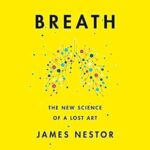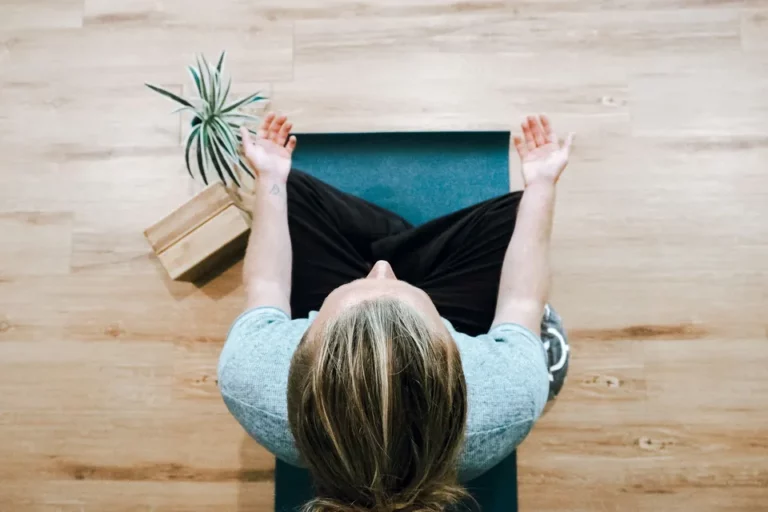The Importance of Breathing Properly in your Daily Life
There is nothing more essential to life than breathing. We inhale and exhale air some 23,000 times a day, and we do it automatically, without paying much attention to it. The way we breathe has a great impact on our health and well-being, and it affects us both in our physical body and our emotional state.
Unfortunately, human beings have lost the ability to breathe correctly by acquiring inappropriate habits that have harmful consequences for our health. About 80% of the world’s population is estimated to have developed inappropriate respiratory mechanics.
In this article, we’ll review the importance of proper breathing in our daily lives and discuss how proper breathing can help reduce stress, improve sleep quality, and boost the immune system. We will also mention some of the best-known breathing techniques, and how to incorporate proper breathing into our daily routine.
Este artículo también está disponible en Español
How to breathe correctly: essential tips to maintain good breathing
Breathing is an unconscious function controlled by the autonomic nervous system, which is in charge of all the involuntary functions of our body. The human being is born with the basic knowledge to breathe correctly. However, during the early stages of his growth, he acquires bad breathing habits by copying them from the adults he lives with.
Recovering the correct way of breathing is important for our health. Breathing correctly can improve heart and respiratory rates, lower blood pressure, improve the efficiency of gas exchange in the respiratory system, increase vagus nerve activity, and improve ventilation efficiency and arterial oxygenation, among other benefits.
Next, we will see what are the essential elements of correct breathing.
Breathing through the nose: what are the benefits and how to do it right
For many of us, the nose is simply a protrusion that protrudes from our face with two holes through which we breathe and through which we can smell. But the nose is a set of more complex structures that have a very important role in respiratory function.
Air moves in and out of the nose during normal breathing. The nose has many blood vessels that heat, humidify, and pressurize the air that enters the lungs. In addition, the nose has many small hairs, called cilia, which are found inside the nostrils and help to filter the air we breathe, removing dust particles and other substances that may be harmful to our body, thus avoiding the risk of infections.
Nasal breathing has many benefits for our health, compared to breathing through the mouth. Despite this, many people breathe through their mouths, failing to receive the benefits of breathing through their noses. It is estimated that currently between 25% and 50% of the population breathes mainly through the mouth, so it is important to know the benefits of nasal breathing to understand its importance. Let’s see some of them:
- Nasal breathing increases circulation, raises blood oxygen and carbon dioxide levels, slows respiratory rate, and improves overall lung volumes.
- Breathing through your nose brings 20% more oxygen to your body than breathing through your mouth. This is because nasal breathing pressurizes the inhaled air by increasing the volume of oxygen. This is why it takes longer to fill your lungs when you breathe through your nose than when you breathe through your mouth.
- The nose offers us protection and cleanliness against foreign particles and pathogens present in the air we breathe. This benefit is not obtained when we breathe through the mouth. This explains why respiratory tract diseases are more common in people who breathe through the mouth.
- Breathing through the nose releases nitric oxide that is in the nasal cavities. Nitric oxide is a neurotransmitter and aero-dilator, which dilates the nostrils to facilitate the flow of gases during respiration. More importantly, nitric oxide improves lung function through its vasodilatory effect, which reduces vascular resistance in the lungs and helps normalize pulmonary arterial pressure. In addition, the release of nitric oxide in the nasal cavity directly interacts with viruses, helping to eliminate them.
- The nose modulates the temperature of the air we breathe. Thus, it allows us to react to cold or heat, not only with changes in vasodilation in the nostrils but also causing a reaction in the entire thermoregulatory system of our body. Air entering the lungs is heated in the nostrils, which helps maintain body temperature.
- Nasal breathing promotes bloodstream pH control by speeding up or slowing down breathing to prevent respiratory acidosis or alkalosis. The brain controls the rate and depth of respiration to regulate the volume of carbon dioxide that is exhaled, thus maintaining the pH of the blood at the required level.
- During growth, nasal breathing stimulates the correct development of the mouth, teeth, speech, and swallowing. Mouth breathing can change the arrangement of the facial bones and teeth in children, causing the mouth to not close properly and the teeth to develop crookedly.
- Nasal breathing is important for swallowing as it helps keep the mouth and throat moist. Also, nasal breathing helps maintain negative pressure in the pharynx, which helps keep the airway open during swallowing.
- Correct nasal and controlled breathing influences neural oscillations throughout the brain, particularly in brain regions related to emotions. The cerebral oscillations are dragged by nasal breathing and driven by the olfactory bulb. They then travel to the piriform cortex, where they spread to the hippocampus and modulate neural processes critical to memory formation.
- Breathing through the left nostril lowers blood pressure and heart rate, and stimulates the right hemisphere, or the creative side of the brain. While breathing through the right nostril has the opposite effect, it increases blood pressure and heart rate and stimulates the left hemisphere of the brain. Our autonomic nervous system controls the so-called “nasal cycle”, which is a natural rhythm of congestion and decongestion of the nostrils that allow the flow of gases in the breath to alternate through each nostril.
Breathing through the nose is the natural and correct way to breathe. The number of benefits nasal breathing offers is amazing and diverse, and we lose them when we habitually breathe through our mouths. We must practice conscious nasal breathing to recover correct breathing and improve our health conditions and general well-being.
Diaphragmatic Breathing
The mechanics of human respiration is the process by which air is forced into the lungs in the action known as inhalation and then forced out of the lungs in the action known as exhalation. This mechanical and involuntary process requires the movement of the respiratory muscles.
Based on this, breathing can be divided into two types: chest breathing and diaphragmatic breathing. Thoracic breathing uses the upper chest muscles to transport oxygen to the lungs, while diaphragmatic breathing, also known as deep breathing, uses the body’s dominant respiratory muscle: the diaphragm.
The diaphragm is a concave, umbrella-shaped muscle located just below the lungs and is the most important respiratory muscle. When we inhale air, the diaphragm contracts lower, and air fills our lungs. When we exhale, the diaphragm expands, rises, and the air is expelled. During diaphragmatic breathing, you breathe deeply from the abdomen, while your chest remains flat.
In diaphragmatic breathing, the breath is deeper, the air goes down to the lower lobes of the lungs where the exchange of oxygen occurs more efficiently. There is a false belief that taking quick and shallow breaths improves the oxygenation of the body, but it is an unfounded belief. When you take short, shallow breaths, you stop using 50% of the air you inhale because you don’t give your body time to use it. By breathing slower and deeper you are improving your respiratory efficiency by 35% compared to shallow breathing.
Diaphragmatic breathing provides great benefits to our health. From reducing anxiety and stress by helping to achieve a state of calm, to improving our immune system and controlling blood pressure.
READ OUR RELATED POST:

Why Is Deep Breathing Important?
Want to improve your life with just a few minutes a day? Deep breathing can help you do that. It has many benefits for your body and mind, and it’s easy to learn. Read our blog post on why deep breathing is important and how to practice it. Click here to read the post and start your journey to better health and happiness.
Like the heart, the diaphragm works like a pump. When you move during inhalation and exhalation, you activate abdominal circulation, which can hold 30-50% of blood volume, which is then pumped to different areas of your body. This is why it is known as the second heart. When the diaphragm goes down, it also gently massages the organs and helps circulate more lymphatic fluid, so it also acts as a lymphatic system pump.
The diaphragm also massages the vagus nerve, whereby we get a calming parasympathetic response to our body. Activating the vagus nerve improves intestinal transit and stress-related digestive system problems. In addition, it reduces migraines, slows cognitive decline, and relieves anxiety.
Deep or diaphragmatic breathing is the correct mechanic for breathing. Through it, you obtain the greatest efficiency in respiratory function, bringing calm to your central and emotional nervous system, and reducing stress and demand on your circulatory system and the rest of your systems in general.
Breathe Consciously
Most of the time we are not aware of our breathing. We breathe automatically directed by our autonomic nervous system without our voluntary intervention. But breathing is the only physiological function that can be consciously regulated, allowing us, at least for a while, to take control of our breathing.
Conscious breathing requires that we become observers of our breath. Observe how you breathe at different times of the day, which allows you to realize how you breathe, and based on this observation make the necessary adjustments and corrections.
Conscious breathing allows us to have the knowledge and attention necessary to exert an influence on the different dimensions of breathing. The practice of conscious breathing can bring you multiple benefits at different levels, such as improving digestion, eliminating accumulated tension in your body, controlling weight, regulating cortisol, and controlling emotions, among others.
Conscious breathing allows us to move from a state of anguish, anxiety, fear, insecurity, and stress to a state of grace, softness, and acceptance, to have a full and pleasant experience of ourselves. Natural, rhythmic, slow, and fluid breathing transfers those same qualities to the nervous system, replacing the chronic stress response with relaxation, security, and stability. With breath control, we will have an impact on our nervous system almost immediately.
Some Breathing techniques and exercises that allow us to breathe better
Breathing techniques have normally been associated with Yoga and Meditation practices, and this is because these disciplines have known since ancient times the power of breath to connect the body, mind, and spirit, and bring them to elevated levels of calm and awareness.
But you don’t have to be an expert in them to practice these exercises and get benefit from them. Breathing techniques and exercises can help us correct bad breathing habits to achieve correct and efficient breathing, first in a voluntary and controlled way, and then, with discipline and consistency, make it habitual and automatic.
Let’s see below the most common and simple exercises:
Breathing 4×4
The 4×4 Breath is a balancing breath that you can do at any time of the day. Inhale in 4 counts and exhale in 4 counts. Breathe this way for 3-5 minutes to balance your nervous system.
Breathing 4×8
Breathing 4×8 is an ideal relaxing breath to do before bed. In this breathing technique, you inhale in 4 counts and exhale in 8 counts. Breathe like this for 3-5 minutes to relax, get rid of stress and anxiety, and sleep better.
Breathing 4x4x4, also known as Triangle Breathing
The 4x4x4 breathing technique is a simple and powerful technique to balance and calm the mind, as well as to oxygenate the body and strengthen the respiratory muscles. This technique consists of inhaling through the nose for 4 seconds, holding the breath for 4 seconds, and exhaling for 4 seconds. Repeat this breath for 3 to 5 minutes. You can add this technique to your daily routine to help you relax and reduce stress.
Breathing 4x4x4x4, also known as Square Breath or Box Breath
This relaxing breathing technique consists of inhaling for 4 seconds, holding your breath for 4 seconds, exhaling for 4 seconds, and holding your breath for 4 seconds. Repeat this breath for 3 to 5 minutes to complete the exercise.
Other well-known and popular breathing techniques
There are many other breathing techniques and exercises, each of which can bring us similar benefits, and different benefits. On the net, you will find many detailed explanatory videos that will serve as a guide. Here is a list of some of them:
- Buteyko breathing technique
- Tummo Breathing
- Pranayama
- Qi Gong: a holistic healing practice
- The Win Hof method
- Athletic training with hypoventilation
- Resonant Breath
VIEW OUR RECOMMENDED PRODUCT:
Transform Your Life with the Power of Breath
Discover how to breathe better, live better, and feel better with Breath, the new science of a lost art by James Nestor. This groundbreaking book reveals the secrets of optimal breathing for health, performance, and happiness. You’ll learn how to improve your breathing habits, enhance your oxygen intake, and unlock your full potential. Click Here to find out how Breath can change your life for the better.
Conclusion
Breathing is a vital function of our body and is essential for our survival. Breathing correctly is important to maintain good health and well-being. In this article, we have discussed the essentials for maintaining good breathing.
Start breathing through your nose, taking deep, slow breaths using your diaphragm, and you’ll begin to reap the enormous health benefits we’ve mentioned. And remember to become an observer of your breathing to retrain your autonomic nervous system to make correct breathing an automatic response.
In addition, we have discussed some breathing techniques and exercises that allow us to breathe and feel better. These techniques are easy to learn and can be done anytime, anywhere.
We hope this article has been useful to you and that you can apply these tips in your daily life to improve your health and well-being. Leave us your comments at the end of this article.





I have always been told to try to breath through my noise but I did not know why. The list of benefits from breathing through the nose is amazing. I had not idea that it was so important. The exercises that you have suggested are simple, but take a degree of intention to remember to do them. I am bookmarking this page so that I can refer to the breathing exercises until I know them. Thanks for this information. This seems like an easy way to do something practical for my body.
Jim
I’m glad you found the article informative and useful! Breathing through the nose has many benefits that we normally didn’t know about, and it would be great if you could incorporate it into your daily routine. The exercises may take some getting used to, but with practice, they will become second nature. Don’t hesitate to reach out if you have any questions.
What a great read!
I’ve never really practiced any types of breathing exercise outside of focusing on my breath in Yoga! When I focus on my breath in Yoga, I slip away into another place, calm and relaxed!
I am going to give some of these breathing techniques that you shared a try! Bookmarking!
Thanks again,
Lisa Marie
It’s great to hear that you enjoyed the article and found it helpful! It’s always good to try new things and see what works best for you. I hope you find the breathing techniques helpful and that they help you feel calmer and more relaxed. It is good to know that you are already a yoga practitioner. That will help you connect with your breath.